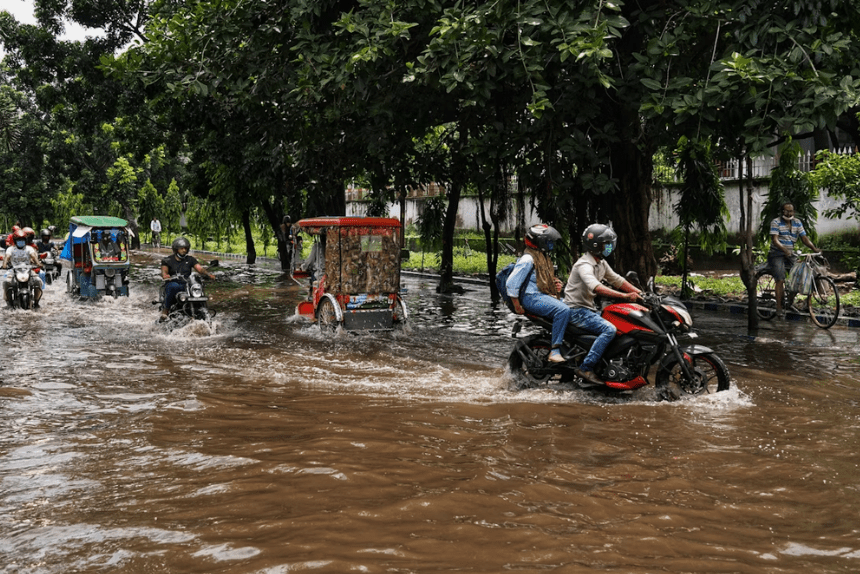Flash floods within the northern Indian state of Uttarakhand have left over 100 people missing and claimed at least one life. The catastrophe struck on Tuesday whilst heavy rainfall brought on a surprising surge of water in the place, affecting the village of Dharali in the Uttarkashi district. The torrential downpour, probably prompted by way of a cloudburst, submerged roads and buildings in its path. The floods have also hindered ongoing rescue operations, with the government struggling to reach the worst-hit regions.
Rescue groups have managed to store about one hundred ninety individuals so far, in line with Uttarakhand Chief Minister Pushkar Singh Dhami. However, the search for those lacking remains amid tough conditions. As rescue efforts progress, officials are also focused on preventing extra threats posed by the growing water levels and the particles blocking key rivers within the area.
What Caused the Flash Floods in Uttarakhand?
The devastating floods have resulted from a cloudburst, a surprising and excessive downpour of rain over a small area that ends in fast flooding. This intense climate occasion, which passed off around 13:30 India time (08:00 GMT), brought about the Kheerganga River overflowing, sending a massive wave of muddy water crashing down the hills.
Uttarkashi, the district stricken by the floods, has been suffering from weeks of heavy rainfall, making it particularly susceptible to such occasions. Dharali village, positioned just 2 km from Harsil, an area housing both an Indian army base and an Indo-Tibetan Border Police camp, is now dealing with intense destruction. In addition to neighborhood residents, a minimum of 10 squaddies stationed at the army base are also lacking. Here is the link to our article on Deadly Floods Confirmed.
How Are Authorities Responding to the Crisis?
Rescue operations in Uttarakhand are ongoing; however, the efforts have been slowed by the thick sludge and particles left by way of the floodwaters. The government has deployed helicopters to help with the recovery of humans and to assess the harm. The Bhagirathi River, which flows into the Ganges, is of special concern. Water has shaped an artificial lake after being blocked by way of particles, which poses a critical risk to towns downstream if it is not cleared in time.
Additionally, India’s climate branch has issued warnings of persistent landslides, specifically in landslide-prone areas, and urged people to avoid these zones. Schools in components of Uttarakhand had been closed as a precautionary measure. The location, recognized for its herbal splendor, regularly receives fewer vacationers in the course of the monsoon season, which may also have restricted casualties. Residents stated that if the region had been fully populated, the disaster might have been far worse.
Why is Uttarakhand Vulnerable to Flash Floods?
Uttarakhand, positioned inside the western Himalayas, is particularly vulnerable to flash floods and landslides because of its geography. The location studies heavy monsoon rains, which boost the threat of severe climate events like the one witnessed in Dharali. Historically, the kingdom has confronted devastating flash floods, which include a catastrophe in 2021 that claimed more than two hundred lives. The 2013 Uttarakhand floods were especially catastrophic, with entire villages destroyed and countless lives lost.
The vulnerability of this location to such occasions has prompted both nearby and countrywide governments to focus on disaster control and prevention. However, the demanding situations posed by way of the terrain and unpredictable climate styles make it difficult to fully protect communities against these routine natural disasters. Here is the link to our article on the Flood in Texas.
Final Thoughts on the Uttarakhand Flash Floods
The current Uttarakhand flash floods serve as a grim reminder of the region’s vulnerability to severe weather events. As authorities persevere with rescue operations, the priority is to discover the missing individuals and save them from a similar lack of danger. This tragedy highlights the pressing need for more advantageous catastrophe preparedness and infrastructure in flood-prone areas like Uttarakhand. While the spot focus is on saving lives, long-term measures should be taken to mitigate the risks of flash floods and other natural disasters in the location.








